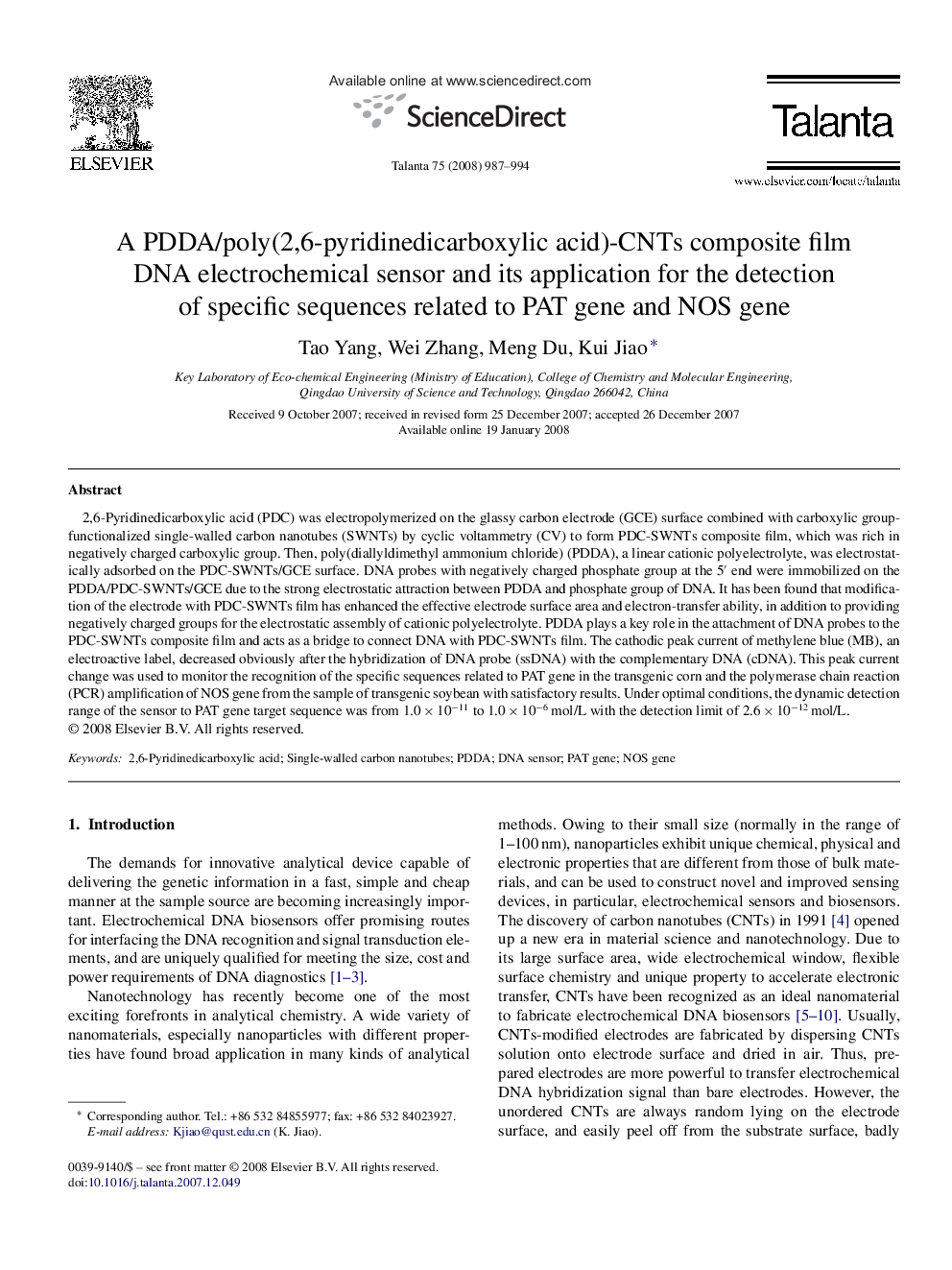| Article ID | Journal | Published Year | Pages | File Type |
|---|---|---|---|---|
| 1243718 | Talanta | 2008 | 8 Pages |
2,6-Pyridinedicarboxylic acid (PDC) was electropolymerized on the glassy carbon electrode (GCE) surface combined with carboxylic group-functionalized single-walled carbon nanotubes (SWNTs) by cyclic voltammetry (CV) to form PDC-SWNTs composite film, which was rich in negatively charged carboxylic group. Then, poly(diallyldimethyl ammonium chloride) (PDDA), a linear cationic polyelectrolyte, was electrostatically adsorbed on the PDC-SWNTs/GCE surface. DNA probes with negatively charged phosphate group at the 5′ end were immobilized on the PDDA/PDC-SWNTs/GCE due to the strong electrostatic attraction between PDDA and phosphate group of DNA. It has been found that modification of the electrode with PDC-SWNTs film has enhanced the effective electrode surface area and electron-transfer ability, in addition to providing negatively charged groups for the electrostatic assembly of cationic polyelectrolyte. PDDA plays a key role in the attachment of DNA probes to the PDC-SWNTs composite film and acts as a bridge to connect DNA with PDC-SWNTs film. The cathodic peak current of methylene blue (MB), an electroactive label, decreased obviously after the hybridization of DNA probe (ssDNA) with the complementary DNA (cDNA). This peak current change was used to monitor the recognition of the specific sequences related to PAT gene in the transgenic corn and the polymerase chain reaction (PCR) amplification of NOS gene from the sample of transgenic soybean with satisfactory results. Under optimal conditions, the dynamic detection range of the sensor to PAT gene target sequence was from 1.0 × 10−11 to 1.0 × 10−6 mol/L with the detection limit of 2.6 × 10−12 mol/L.
